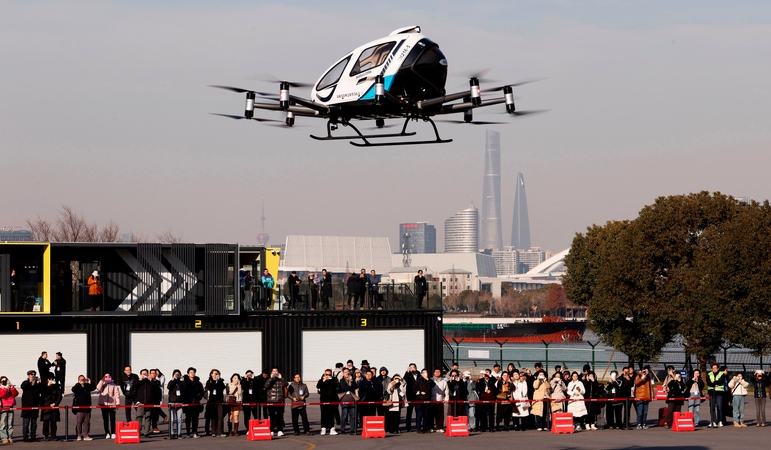Flying cars, once the stuff of science fiction, are becoming increasingly plausible. Earlier this year, Sichuan-based start-up Aerofugia revealed plans to conduct passenger test flights for its AE200 eVTOL (electric vertical take-off and landing) aircraft.
If all goes as planned, residents of Chengdu, the capital of Sichuan province, could soon be riding in these ‘flying taxis’ as early as the second half of 2026. The AE200, designed to carry five to six passengers, is set to become the first tilt-rotor eVTOL in China to complete a full-scale test flight.
China’s flying vehicle sector has been experiencing rapid growth, with numerous companies unveiling innovative eVTOL designs. These aircraft, powered by electricity instead of aviation fuel, can take off and land vertically like helicopters, making them ideal for low-altitude air travel. They are capable of reaching altitudes of up to 1,000 meters and offer a range of advantages over traditional transportation methods, including enhanced safety, reduced operating costs, quieter operations, and zero emissions. Additionally, eVTOLs do not require runways or airports, offering significant flexibility for urban mobility.
A Growing Industry with Enormous Potential
Although the global eVTOL market is still in its infancy, its growth prospects are substantial. According to Indian research firm MarketsandMarkets, the market value is projected to grow from US$162 million (HK$1.26 billion) in 2023 to US$411 million by 2030, with a compound annual growth rate (CAGR) exceeding 20%.
As flying cars are increasingly seen as the future of air transportation, a wide range of manufacturers are racing to develop eVTOL aircraft. A report by Beijing-based Intelligence Research Group reveals that there are over 400 eVTOL R&D companies globally. The Vertical Flight Society, a US-based non-profit, reports that more than 1,000 eVTOL projects are underway worldwide.
The sector is attracting interest from specialized eVTOL companies like Joby, Archer, Wisk, EHang, AutoFlight, and Volant, as well as aerospace giants such as Boeing, Airbus, Bell, and Embraer. Even traditional automakers—Mercedes-Benz, Porsche, Hyundai, and Geely—and tech companies like Tencent have entered the fray.
Despite this growing activity, most progress has been confined to early-stage development. Few companies have completed a full-scale maiden flight, achieved airworthiness approval, or successfully transitioned to a secure flying mode.
China Leads with Official Approvals
In China, however, the eVTOL industry has made significant strides. Around 10 manufacturers have reached the airworthiness stage and are now seeking official approval. Flying vehicles must first obtain a type certificate from the Civil Aviation Administration of China (CAAC), followed by a production certificate before they can enter batch production.
One notable success story is EHang, which has obtained both a type certificate and a production certificate for its EH216-S autonomous passenger eVTOL, making it the first eVTOL to be granted full airworthiness status. Meanwhile, AutoFlight’s autonomous V2000CG CarryAll aircraft has become the world’s first 2-tonne class flying vehicle to receive a cargo-type production certificate. The CarryAll has a maximum take-off weight of 2 tonnes, a range of up to 250 kilometers, and a maximum cruise speed of 200 kilometers per hour.
Volant and Aerofugia are also making progress, having achieved secure flying mode transitions and undergone preliminary reviews by China’s aircraft evaluation group.
As China continues to make strides in the eVTOL industry, the dream of flying cars may be closer to reality than ever before, offering a glimpse into the future of urban air mobility.




